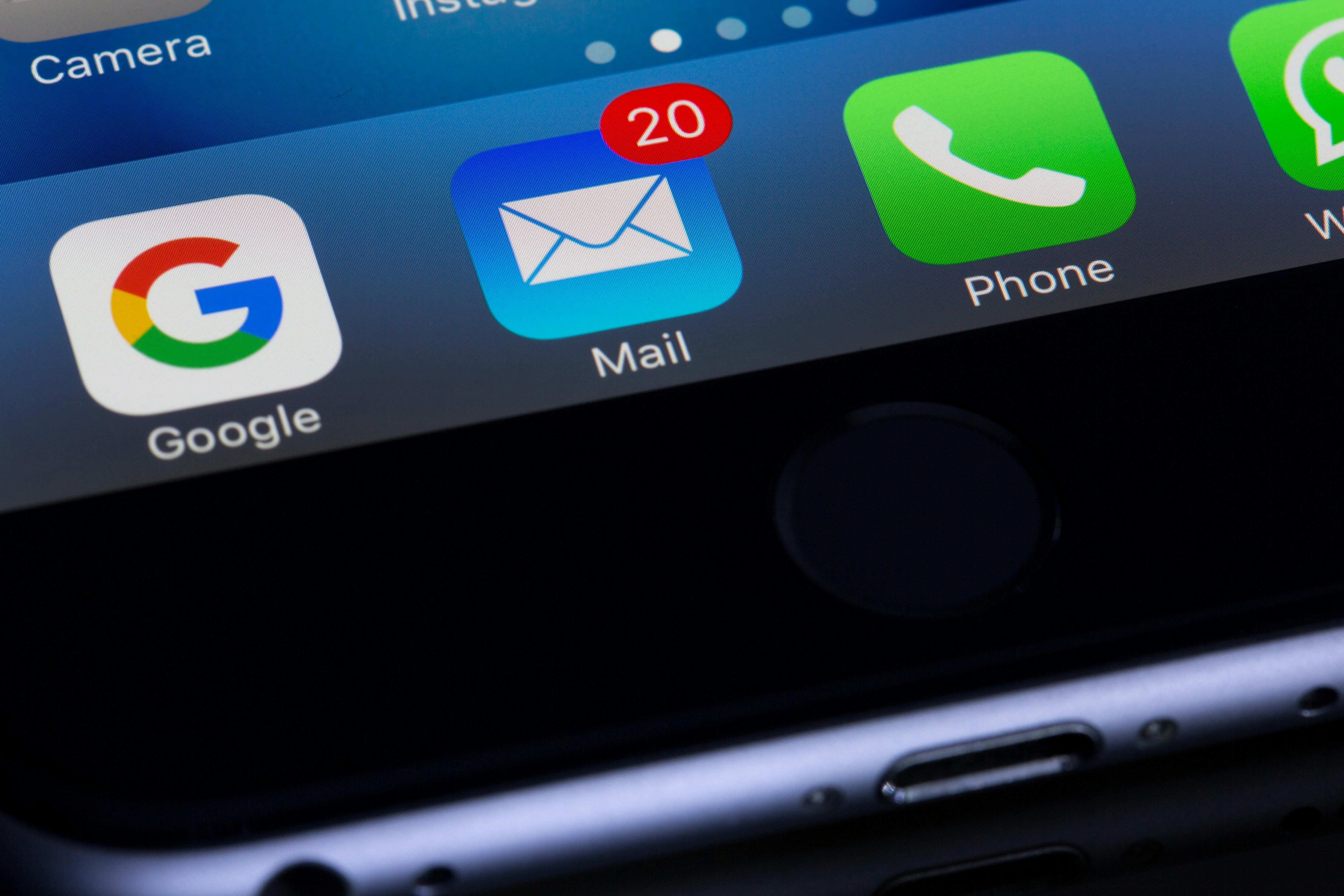Lead Generation
How to Use Multi-Channel Marketing: Tips and Strategies
Unlock the secrets of multi-channel marketing to engage your audience more effectively and enhance your ROI.
Jul 14, 2024

Some brands always seem to be where you are, mastering multi-channel marketing to captivate their audience. From targeted emails to engaging social media interactions and memorable in-person events, they create a unified customer experience that drives loyalty and increases engagement.
Ready to see how it's done? Let's explore the effective strategies behind successful multi-channel marketing that could transform your business outreach.
Understanding Multi-Channel Marketing
What Is Multi-Channel Marketing?
Multi-channel marketing uses various platforms to communicate with your audience. This can include email campaigns, social media posts, and in-person events. Imagine throwing a party and sending invitations through multiple channels so everyone gets the message. The goal is to reach people where they spend their time.
Key Components of Multi-Channel Marketing Strategies
1. Consistent Messaging:
Ensure your message remains the same across all channels. Inconsistent messaging confuses your audience. For instance, if you promote a discount on LinkedIn, it should match what's on your email campaign.
2. Target Audience Segmentation:
Break down your audience into smaller groups based on interests or behaviors. This helps tailor your messages to be more relevant. Think of how a coffee shop might send different offers to espresso lovers vs. tea drinkers.
3. Channel Integration:
Use all channels in a cohesive manner. If people see your social media ad, they should find the same promotion on your website. This builds trust and keeps your brand experience seamless.
4. Tracking and Analytics:
Monitor how each channel performs. Knowing which channels drive the most engagement or sales lets you focus on what's working. It's like keeping tabs on which party invitation method brought the most guests.
Common Mistakes and Misconceptions
1. Overloading with Channels:
Using too many channels can dilute your efforts. Focus on the most effective ones. Trying to be everywhere at once can lead to mediocre engagement everywhere.
2. Ignoring Mobile Users:
Many people browse on their phones. Make sure your emails and websites are mobile-friendly. A website that looks great on a computer might be unusable on a phone.
3. Neglecting Data Analysis:
Skipping data review means missing out on insights. Regularly check analytics to understand what's working. Data tells you if you should keep using a channel or try something new.
Various Techniques and Their Applicability
Cold Email Campaigns:
Highly effective for reaching professionals directly. Keep your emails concise and personalized. Mention specific details to make them feel tailored; for example, referring to a recent achievement of the recipient's company.
Social Media Outreach:
Platforms like LinkedIn are perfect for B2B marketing. Engage with posts, join groups, and share valuable content. Establishing a professional profile and posting relevant updates can attract leads without hard selling.
In-Person Events:
Hosting or attending events can forge strong connections. This works best for industries where personal relationships are crucial. Sharing a handshake can be more impactful than an email.
Incorporating Multi-Channel Practices
1. Start Small:
Begin with a few channels. Test and see which ones perform best for your audience. You don’t need to use every platform under the sun.
2. Use Automation Tools:
Tools like HubSpot or Mailchimp can streamline your efforts. These platforms can manage posts, emails, and track performance, making multi-channel marketing manageable.
3. Collect Feedback:
Ask your audience which channels they prefer. Simple surveys can provide valuable insight. If people prefer text messages over emails, adjust your strategy.
Embracing multi-channel marketing means meeting your audience where they are. Consistent messaging, effective segmentation, and strategic channel use can create a seamless experience. Test different techniques to find what works best for your specific needs.
Benefits of Multi-Channel Marketing

Using multi-channel marketing enhances your brand's reach, ensuring your messages hit a wider audience. Multi-channel marketing also significantly improves engagement by interacting with customers across their preferred platforms.
Enhanced Customer Reach
Multi-channel marketing gives you access to various audience segments, helping you expand your reach. Imagine you're hosting a party; sending invitations through just one channel won't ensure everyone gets it. But if you send invites via email, social media, and even direct mail, you'll cover all bases. Using multiple channels like emails, social media, and SMS ensures more people see your messages.
Common Mistake: Relying heavily on one channel, like only using email, might limit your reach. Diversifying your platforms increases your chances of connecting with broader audiences.
Practical Tip: Identify where your target audience spends their time. Use tools like Google Analytics or social media insights to pinpoint popular channels. This knowledge helps you allocate resources effectively.
Techniques:
Cold Emails: Utilize personalized cold emails to reach potential leads who might not be active on social media.
Social Media: Engage with users who prefer interactive platforms like LinkedIn for professional outreach.
In-Person Events: For local or niche markets, face-to-face interactions can make a significant impact.
Improved Customer Engagement
When you communicate through multiple channels, customer engagement rates soar. Think of multi-channel marketing as having different conversation openers ready for various settings. Some customers prefer email updates, while others engage more on social media. Offering choices in communication keeps them interested.
Common Misconception: Some believe casting a wide net means generic content. Avoid this by tailoring messages to fit each platform's strengths. For instance, a LinkedIn post needs a professional tone, while Instagram can be more casual.
Practical Tip: Integrate your CRM with your marketing platforms to ensure consistent messaging. Tools like HubSpot or Salesforce help manage responses and analyze which channels work best.
Social Media Outreach: Create interactive posts, polls, or live sessions to engage your audience actively.
Email Campaigns: Design targeted campaigns based on user behavior analytics—like sending a follow-up email to those who clicked a link but didn't complete a purchase.
Personalized Content: Use data to understand customer preferences and deliver personalized content, increasing the chances of engagement.
Incorporating these practices helps you maintain a seamless, engaging presence across all platforms. Allocate resources wisely, analyze performance metrics, and keep your messaging consistent to maximize the benefits of multi-channel marketing.
Crafting a Multi-Channel Marketing Strategy
Creating a multi-channel marketing strategy can seem overwhelming, but breaking it down step-by-step makes it manageable. The right approach ensures you make meaningful connections, drive engagement, and boost your lead generation efforts.
Choosing the Right Channels
Selecting the right channels is crucial. It's about knowing where your audience hangs out and interacts the most. Is it LinkedIn for professional networking, or email for direct communication?
LinkedIn: Ideal for professional services and B2B outreach. Use it to connect with potential clients and showcase your expertise through posts and articles.
Email: Perfect for personalized messages and targeted campaigns. It allows direct access to your audience’s inbox, where you can share valuable content or offers.
Social Media: Platforms like Facebook and Twitter help reach a broader audience and engage through regular updates.
Avoid jumping on every platform just because it’s popular. Focus on channels that align with your business goals and where your target audience is most active.
Integrating Your Messaging Across Channels
Consistency is key when communicating across multiple channels. Your brand voice, values, and messaging should be uniform, whether you're sending an email or posting on social media.
Unified Tone and Style: Maintain a consistent tone that reflects your brand personality. This could be professional, friendly, or something else depending on your audience.
Core Message: Ensure the core message remains the same but tailor it slightly to fit each platform. For instance, a detailed blog post can be summarized into a LinkedIn post or an engaging infographic.
Inconsistent messaging can confuse your audience and dilute your brand identity. Keep everything aligned to create a seamless experience.
Tracking and Analyzing Performance
Tracking your performance helps you understand what’s working and what’s not. Use analytics tools to measure the effectiveness of your campaigns.
Metrics to Monitor: Track key metrics like open rates, click-through rates, and conversion rates. These give insight into how your audience is interacting with your content.
Tools to Use: Utilize tools like Google Analytics for web traffic, LinkedIn Analytics for social media performance, and email marketing software analytics.
Identify patterns and adjust your strategies based on the data. For example, if LinkedIn posts with infographics perform better, consider creating more visual content.
This content offers concise, friendly advice while maintaining a knowledgeable tone, guiding readers through crafting a multi-channel marketing strategy.
Challenges in Multi-Channel Marketing
Maintaining Brand Consistency

Multi-channel marketing is like juggling multiple balls at once. Each channel—social media, email, or face-to-face events—represents a ball. If you’re not careful, you might drop one. When you don’t keep your messaging and style consistent across these channels, it’s easy for customers to get confused, which can dilute your brand's message.
To avoid this, create a brand style guide. Think of it as your brand’s rulebook. It should include your brand’s tone of voice, color scheme, logo usage, and key messaging. Make sure anyone working on your marketing has access to and understands the guide.
Common mistake: Changing the message slightly to fit the platform. While it’s important to adapt slightly, the core message should remain the same. If you’re promoting a discount, make sure all channels highlight the same information.
Managing Data Integration
Data in multi-channel marketing can be like a messy garage—it’s all there, but it’s chaos. You need to track interactions from each channel to understand your customers' journey and personalize their experience. But integrating all that data is no small feat.
Use Customer Relationship Management (CRM) software to keep your data organized and accessible. A good CRM will pull information from all your channels into one place, making it easier to see the big picture.
Common mistake: Relying on separate tools that don’t communicate. If your email marketing tool doesn’t sync with your social media analytics, for instance, you’ll end up with fragmented data. Choose tools that integrate well with each other.
Balancing Automation and Personalization
Automation is your friend. It helps you manage repetitive tasks like email follow-ups. But don’t let automation turn your communications into robotic, impersonal messages. You want customers to feel valued, not like they’re just another number.
To strike this balance, use automation for tasks like scheduling posts or sending initial outreach emails. But add a personal touch in follow-up interactions. Mention specifics from their profile or previous conversation to show you’re paying attention.
Common mistake: Over-automating and losing the human touch. If all your LinkedIn messages sound the same, people will notice. Mix automation with genuine interaction for best results.
Budget Allocation
Spreading your budget across multiple channels can be tricky. It’s like being a chef with limited ingredients—you need to decide how much to use for each dish to make a balanced meal.
Start by identifying your most effective channels. Analyze engagement rates, conversions, and ROI from past campaigns. Allocate more budget to high-performing channels but don’t neglect others. Some channels might be more effective for brand awareness, while others drive conversions.
Common mistake: Putting all your budget into one or two channels. Diversify your spending but keep an eye on your goals and metrics to ensure you’re getting a good return on investment.
Measuring Success
Tracking success in multi-channel marketing is like trying to catch smoke—it can be elusive. The key is to set clear, measurable goals for each channel and use analytics tools to track performance.
Use KPIs (Key Performance Indicators) like open rates, click-through rates, and conversion rates to measure success. Ensure these metrics align with your overall marketing goals.
Common mistake: Measuring the wrong metrics. For instance, a high number of social media likes doesn’t necessarily mean high engagement. Focus on metrics that directly impact your objectives.
Adapting to Changes
Multi-channel marketing requires staying nimble. What works today might not work tomorrow. It’s a bit like surfing—you have to constantly adjust to stay on the board.
Regularly review your strategies. Use A/B testing to see what resonates best with your audience. Stay updated on changes in algorithms and trends to keep your strategies relevant.
Common mistake: Being resistant to change. Holding onto outdated methods can hurt your campaign’s effectiveness. Stay adaptable and willing to pivot as needed.
By addressing these challenges, you can effectively navigate the complexities of multi-channel marketing and leverage it to boost your leads and conversions.
Case Studies
Examining case studies helps you understand multi-channel marketing's practical application. By learning from others' successes and failures, you can refine your strategies and avoid common pitfalls.
Success Stories in Multi-Channel Marketing
Numerous brands excel with multi-channel marketing. Starbucks exemplifies this. They connect with customers via social media, email marketing, and their mobile app, offering a seamless experience. The mobile app's reward program encourages repeat purchases by offering personalized deals and notifications, driving both engagement and revenue.
Another great example is Nike. They've successfully integrated social media campaigns with their website, email marketing, and even in-store experiences. Using the "Just Do It" slogan across all platforms ensures consistent messaging. Nike's social media campaigns often feature user-generated content, connecting with the audience on a personal level and fostering community engagement.
Lessons Learned from Failed Campaigns
Despite the success stories, not all multi-channel marketing efforts succeed. Pepsi’s Kendall Jenner ad is a well-known example. The campaign aimed to address social justice issues but received backlash for being tone-deaf and inauthentic. This incident highlights the importance of understanding your audience and carefully crafting your message.
GAP's logo redesign is another cautionary tale. The company abruptly introduced a new logo without engaging their loyal customer base, leading to significant backlash. The lesson here is to involve and communicate with your audience during major changes to maintain trust and loyalty.
Common Mistakes and Misconceptions
People often assume that more channels always result in better outreach. However, spreading resources too thin can dilute your message. Focus on quality over quantity by selecting channels with the highest engagement potential.
Assuming all channels should carry the same type of content is another common mistake. Tailor content to each platform while maintaining a consistent overall message. For instance, use visually appealing images for Instagram and concise, impactful tweets for Twitter.
Practical Tips for Avoiding Mistakes
Leverage data analytics tools to monitor performance across channels. Tools like Google Analytics help you track user behavior, enabling you to refine your strategy in real-time.
Engage with your audience actively. Respond to comments on social media, email feedback, and reviews. Personalized interactions build stronger connections and enhance customer loyalty.
Techniques, Variations, and Methods
Understanding different techniques helps you choose the right approach. Cross-channel marketing integrates efforts so channels work together, like running interconnected campaigns on social media and email. Omni-channel marketing goes a step further, creating a unified customer experience regardless of the channel used.
For instance, personalized email campaigns can be highly effective. Use customer data to tailor emails, offering relevant products and exclusive deals. LinkedIn outreach using InMail can target professionals in specific roles, making it ideal for B2B marketing.
Incorporating Multi-Channel Marketing Practices
Start by defining clear goals. Determine what you want to achieve through multi-channel marketing, such as increasing brand awareness or driving sales.
Create a detailed plan outlining each channel's role. Ensure your marketing messages align and complement one another across platforms.
Use Customer Relationship Management (CRM) software to streamline data integration. CRMs help keep customer data organized, making it easier to deliver personalized experiences across channels.
By examining these case studies, understanding common mistakes, employing effective techniques, and integrating best practices, you can master multi-channel marketing to boost leads and conversions.
Conclusion
Mastering multi-channel marketing can significantly boost your brand's reach and customer engagement. By maintaining consistent messaging and leveraging tools like CRM software, you can streamline your efforts across various platforms. It's crucial to balance automation with personalization and allocate your budget wisely to maximize effectiveness.
Learning from both successful and failed campaigns provides valuable insights into what works and what doesn't. Avoid common mistakes by staying adaptable to trends and continuously refining your strategies. Employing cross-channel and omni-channel techniques further enhances your marketing efforts.
Incorporating these best practices ensures your business can navigate the complexities of multi-channel marketing, driving leads and conversions more effectively.
Frequently Asked Questions
What is multi-channel marketing?
Multi-channel marketing is a strategy that involves interacting with customers through various channels such as social media, email, websites, and retail stores to enhance brand reach and engagement.
Why is consistent messaging across platforms important?
Consistent messaging across platforms ensures that the brand presents a unified image, which builds trust and recognition among customers, thus enhancing the overall customer experience.
What challenges arise in maintaining brand consistency?
Challenges include differing content requirements for each platform, coordinating between teams, and ensuring all messaging aligns with the brand’s core values and voice.
How can a brand achieve consistent messaging?
A brand can achieve consistent messaging by creating and adhering to a brand style guide that outlines key elements like tone, visual style, colors, and messaging guidelines.
What role does CRM software play in multi-channel marketing?
CRM software helps in organizing customer data, tracking interactions, automating tasks, and personalizing marketing efforts, thus enabling more efficient and effective multi-channel marketing strategies.
How can businesses balance automation and personalization?
Businesses can balance automation and personalization by using automation tools for repetitive tasks and retaining personal touches in customer interactions, ensuring a tailored experience.
What are the key elements of effective budget allocation?
Effective budget allocation involves setting clear priorities, analyzing the return on investment for each channel, and adjusting the budget based on performance and strategic goals.
How should businesses measure the success of multi-channel marketing?
Businesses should measure success through key performance indicators (KPIs) such as engagement rates, conversion rates, customer retention, and return on investment.
What can businesses learn from successful multi-channel marketing case studies?
Case studies like those of Starbucks and Nike reveal the importance of brand consistency, customer engagement, innovative use of technology, and adaptability to market trends.
What are common mistakes in multi-channel marketing?
Common mistakes include inconsistent messaging, improper budget allocation, neglecting data analysis, and over-reliance on one or two channels.
How can businesses avoid multi-channel marketing errors?
Businesses can avoid errors by planning thoroughly, staying adaptable, consistently reviewing performance data, and learning from both successful and failed campaigns.
What is the difference between cross-channel and omni-channel marketing?
Cross-channel marketing integrates multiple channels to work together, while omni-channel marketing focuses on creating a seamless customer experience across all channels.
Why is it important to stay adaptable to trends in multi-channel marketing?
Staying adaptable allows businesses to respond to changing customer preferences and technological advancements, ensuring continued relevance and effectiveness.
What are practical tips for avoiding common multi-channel marketing mistakes?
Practical tips include conducting regular audits, continuously updating the brand style guide, investing in training for the marketing team, and leveraging customer feedback.

